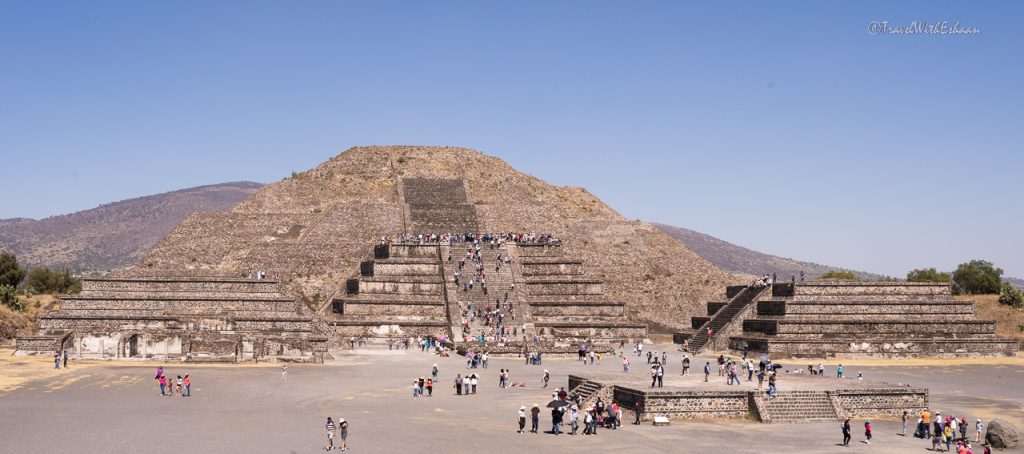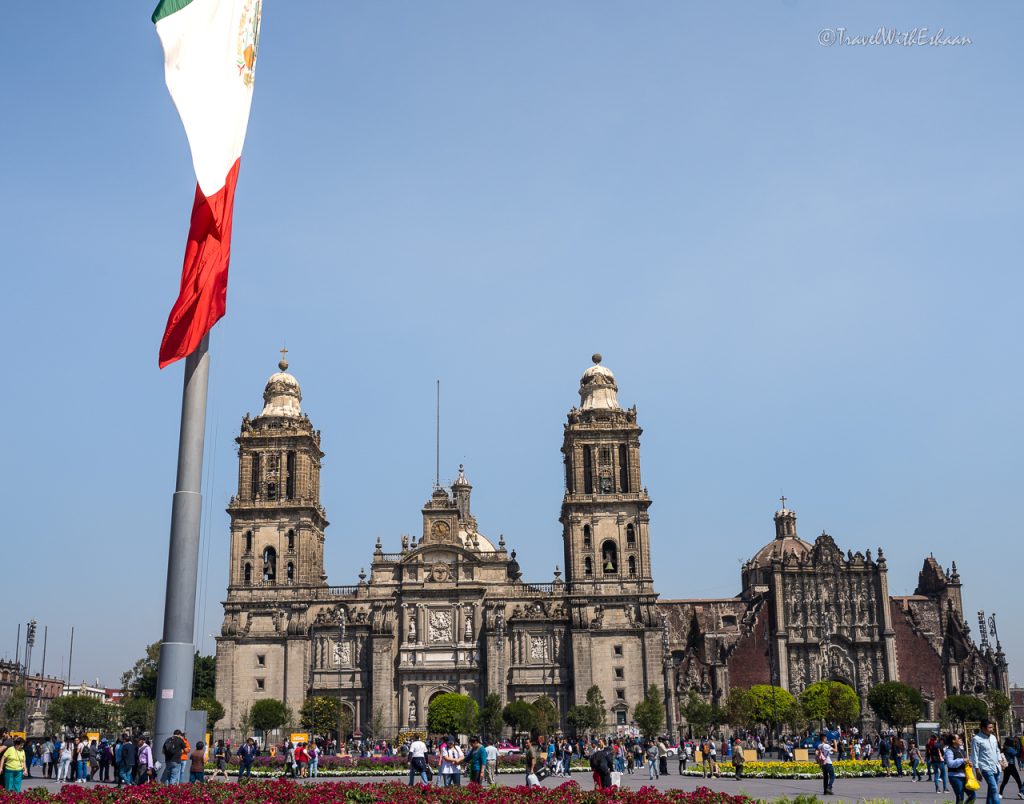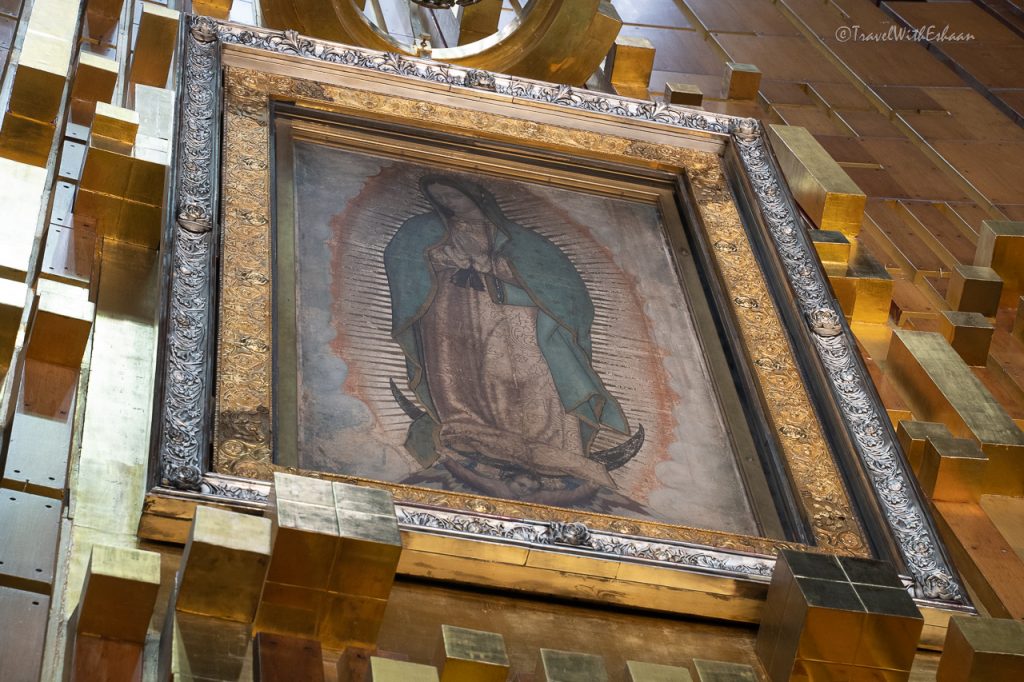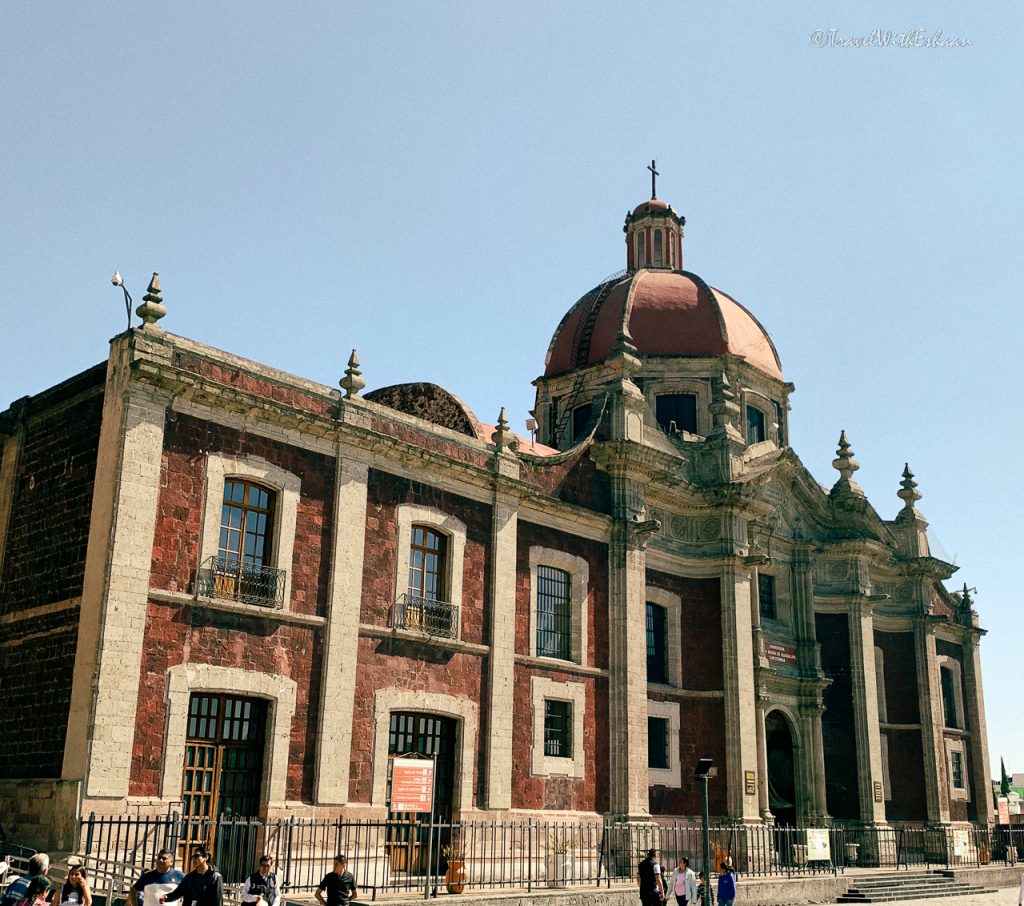
Mexico is another of those nations that are too big to explore. Ever. We visited Mexico City in February 2019. It was less of an attempt to visit the whole city, and more of a “we’ll explore as much as we can and leave” trip, since we had only two days. At least our positioning in the city was rather good. We were staying at Le Meridien Mexico City, which is a hotel in downtown Mexico City.
We got to Dulles Airport in Washington D.C, completed the usual check-in, got on the flight to Bogota on Avianca (we flew on business class, which was a great experience compared to our usual economy), then flew all the way to Mexico City. The security officers asked more questions about our stay than usual, and they even asked us for our itinerary. Since the hotel allowed us to stay for a few hours before our reservation would be active, we didn’t have anything for the first day. This made the officer a little suspicious, but after a few more questions, we were in Mexico.
Once we got past the airport, we called a cab to our hotel, and that was when I realized how enormous Mexico City is. Though Mexico City itself has a population of 8.85 million, which is similar to New York City, its metro area has a population over 21 million (which is also similar to NYC), so it took around an hour to get to our relatively near destination.
We got a good night’s rest, and the next day, we actually began our trip. From our hotel, we got a great view of the Angel of Independence. Afterwards, we visited Zocalo, which is the center of Mexico city. The centerpiece of Zocalo is the Mexico City Metropolitan Cathedral (MCMC), and it is ginormous, but much smaller than the flag of Mexico that towers over the square. The building itself has lots of Spanish influence, especially resembling the
Cathedral of Santiago de Compostela, in Santiago. Its two main towers could be churches of themselves, and they are brought together with a central domed building.
Zocalo square also has a long history. It has been the site for many protests, including during the Mexican Movement of 1968, when armored vehicles prevented the protesters from getting to the square. Zocalo Square is also the site of many celebrations. We also took photos at the big CDMX sign in the square, CDMX symbolizing Ciudad Mexico. Afterwards, we took a bus tour of Mexico city. Mexico City has many parks, stadiums, and whatnot, but we got on the hop-on hop-off bus to see Frida Kahlo’s house.
It took a while to get there. As previously stated, Mexico City is absolutely huge, and the incessant traffic doesn’t help the travel times. So it was around 4:00PM when we actually arrived at Kahlo’s house, which sort of felt like a waste of time. Oh, and when we arrived, we were met with a half-hour line. Fun.
I didn’t expect anything more or less from Kahlo’s house. She was an artist, so it was expected that her house was a deep blue and brown, with green gardens. Very colorful and intense, much like her art. We were shown an exhibition of her art, which had a lot to do with death. Except for the self portraits, I didn’t enjoy it too much.
Afterwards, we went back to the hotel. The downtown was rather nice. Though the traffic was horrendous, it was packed with action and shops, which was a nice change of pace when compared to the endless sprawl throughout the city, which felt completely orderless, and without meaning.
We decided to eat some Mexican food, so we chose a nearby restaurant (I think it was called cantina). The food was great. Guacamole, quesadillas, and tortilla chips. Finally, we went to sleep.
The next day, after a great breakfast at the Le Meridien (which featured fruits, bread, and an assortment of Mexican food). We then got on a tour bus, which would take us to the Aztec ruins of the pyramid of the sun. I was thrilled to visit the ruins, as in my opinion, visiting the ruins of antiquity tells you more than the modern sights, especially in a world with such globalization.
Our first stop on the tour bus was the Basilica of Our Lady Guadalupe, which is one of the most visited basilicas in the world. We were first taken to a gift shop, where we were basically briefed about the significance of the church. In short, it is the most holy place in Mexico (the nation with the second-most Catholics), because the Virgin Mary apparently asked a local peasant to make a shrine there. Guadalupe also appeared on Juan Diego’s cloak, which is now on display in the Basilica.
The basilica, though built in 1974, looks like it came from the 1500s. It had the same features as a stereotypical Spanish building. It had a bronze dome, and a repeating window pattern. Then I realized that it wasn’t actually the building built in 1974. That building was much weirder. It looked like a blue capped tent the size of the Colosseum. It also looked like an upside-down top. We went inside, and all I could see was the crowd. I was barely the height of my surroundings, and clueless about the interior of the building. After being pushed and turned like a ship at sea by the ever-growing crowd, we followed the flow, which directed us towards the cloak. There, a moving walkway was erected, so people didn’t stay in the same place for too long. And it was needed. We were in the middle of a sea of heads. I barely got a peek at the cloak, and then we were off. It was kind of disappointing, to be honest, almost like my experience at Tirupati Temple in India, where I saw less religious statues, and more of people’s bodies.
My dad then asked me if I wanted to see where they signed the Treaty of Guadalupe Hidalgo, the treaty which ended the Mexican-American War. I wasn’t going to deny such an opportunity, so we went to the older building. It was much less crowded, yet it still felt like an important place. We saw the room where they signed the treaty (which was red and gold, highly decorated). Then we returned to the bus, as we had a long drive ahead of us.
The drive there was very sad. We drove through some of the biggest slums in the world. I couldn’t see any one person, but I could see the poverty on those mountains. After passing the slums, we reached the pyramids. Finally, we reached the pyramids. It was a small walk to the stone behemoths, and the first of the ruins weren’t that exciting: broken walls and houses surrounding the temple. It wasn’t as flashy, but it was cool to see a place where a fallen kingdom once resided. After that, we went to the underground, where there were different catacombs and houses. We also saw the Aztec art, which was underground to protect it from the forces of nature, I assume. And then the Pyramid of the Sun and the Pyramid of the Moon. They were in a massive clearing, and they looked just how I imagined them: massive grand behemoths towering over the landscape in a step pyramid style. There were also many side pyramids, which we also climbed along with the main pyramid. We also got to see traditional Aztec obsidian knives, which they used in human sacrifice. We climbed up all of the temples, and though tiring, we got a great view.
Afterwards, we went and ate some Mexican food during the tour. It tasted good, just not as great as the food at Cantina. We took the long ride back to the hotel, and slept. It was a long day, but the next day was a travel day. We would go from Bogota to San Salvador to D.C. We rested for the long day ahead of us.
Tips:
- If you visit Mexico City on a hop-on hop-off bus, make sure to visit Mexico City one area at a time, or the commute time will be longer than the travel time.
- Mexican food in the US is Americanized, so try authentic food at a local restaurant.



